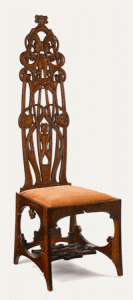
by Sandy | Dec 24, 2009 | Art, Blogroll, Culture, Exhibits, Museums
 One of the exhibits at the Dallas Museum of Art is “The Artistic Furniture of Charles Rohlfs”. “Charles Rohlfs (1853–1936) called his unprecedented designs “artistic furniture.” His unusually inventive forms and imaginative carving combined many different influences, from the abstract naturalism of art nouveau styling to boldly direct forms characteristic of the Arts and Crafts movement.”
One of the exhibits at the Dallas Museum of Art is “The Artistic Furniture of Charles Rohlfs”. “Charles Rohlfs (1853–1936) called his unprecedented designs “artistic furniture.” His unusually inventive forms and imaginative carving combined many different influences, from the abstract naturalism of art nouveau styling to boldly direct forms characteristic of the Arts and Crafts movement.”
“The Artistic Furniture of Charles Rohlfs”- Until January 3, 2010
Dallas Museum of Art
1717 North Harwood, Dallas, Texas
BTW: The “Arts and Crafts Movement” blossomed in the last years of the 19th century and the early years of the 20th century – 1880 to 1910. “It began primarily as a search for authentic and meaningful styles for the 19th century and as a reaction to the eclectic revival of historic styles of the Victorian era and to “soulless” machine-made production aided by the Industrial Revolution.” (from Wikipedia)
(Image: Oak Tall-Back chair, 1899)
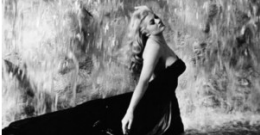
by Bob Martin | Dec 22, 2009 | Art, Culture, Movies, Museums
Fellini is seen as a puppeteer, a sort of Jim Henson, who demanded complete control

Federico Fellini
over his actors and anything else that had to do with his movies was truly an artist with a canvas that was in motion. What I take away from watching his movies was his honesty. Although movies like “8 &1/2” and “Juliet of the Spirits” are filled with dream or mystical sequences, it is impossible to escape Fellini’s truthfulness.
Fellini contributed to an unnamed movement that had us all thinking about film differently. He stoked up our imagination a bit.
An exhibit at the Jeu de Paume “Fellini, la Grande Parade” ends January 17th 2010 and for those of us who celebrate the coming of the New Year in Paris, seeing this exhibit might be a great way to bring in the year.
[ad#Adsense Link Unit]
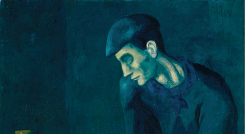
by Bob Martin | Dec 21, 2009 | Art, Artist, Museums
The importance of Picasso’s contribution to modern art can’t be overstated but I feel that some of the larger Museums fail in their effort to create mega exhibits when they fall back on the big names, much like how some movie producers will only green light a production if there is a star.
This coming spring The Met, Picasso in The Metropolitan Museum of Art April 27, 2010–August 1, 2010, will have on display it’s own collection of Picasso’s work, many of which can be seen on display just about any day. So I question (for myself) how major and different will this show be.
[ad#Adsense Link Unit]
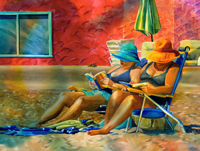
by Sandy | Dec 21, 2009 | Art, Artist, Blogroll, Exhibits, Galleries

2 artists, Carol Mead and Terri Hill, created the water colors for the show, “Cruz’n- Scenes of Santa Cruz” at the bay area Viewpoints Gallery in Los Altos, CA.
 Beautiful, saturated colors enhance their images of summer – beaches, amusement parks, and boardwalks.
Beautiful, saturated colors enhance their images of summer – beaches, amusement parks, and boardwalks.
Lovely and fun.
“Cruz’n – Scenes of Santa Cruz”–
Viewpoints Gallery
315 State Street, Los Altos, CA
(Images: “Pleasure Point”, Carol Mead and “Babes at the Beach”, Terri Hill)
[ad#Adsense Link Unit]
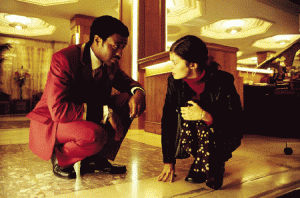
by Sandy | Dec 19, 2009 | Actors, Arts, Entertainment and Music, Blogroll, Directors, Film, Movies
Don’t let the title fool you. This is not a Z list reality TV show.

“Dirty Pretty Things”, 2004 DVD, is a movie that explores how “invisibles” get over/get by in a hostile environment. Illegal immigrants often perform work that nobody else wants to do, but are not really seen. Jobs are done without creating attention or much notice being paid – which works well for those who live in a foreign country without “papers”.
Directed by Stephen Frears, the film, with the help of a great cast- Chiwetel Ejiofor, Audrey Tautou, and Sofie Okendo – tells a story of men and women so desperate to find a better life far away from their home, that poverty and humiliation is endured day after day. Everyone has at least 2 jobs if they’re lucky and manage without sleep. Their situations are precarious and they can be easily exploited. But, this is not a PBS documentary.
This film has humor, charm and suspense. The 2 likable lead characters, a Nigerian Taxi driver and a Turkish hotel maid, cleverly interrupt a black market scheme to harvest body parts for profit. I found myself rooting for them to get over/get by – so that all their trials and tribulations were worth it.
“Dirty Pretty Things” – I enjoyed the movie!
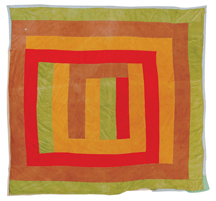
by Sandy | Dec 18, 2009 | Art, Blogroll, Culture, Exhibits, Museums
There is a great exhibit that has been traveling around the country, museums, churches, community houses, for the past several years – “The Quilts of Gee’s Bend”. In 2010 it will visit the Nevada Museum of Art in Reno.

The quilts were sewn by the women of a small Alabama community. Beginning more than 60 years ago, they created works of art out of worn dresses, old jeans, and scraps of cloth. They may have been made for warmth, but their beauty couldn’t help but be noticed and appreciated.
Some have described them as primitive, but when the quilts are lined up on a wall, it becomes apparent that the women pored so much of themselves into the work and took such pride in their craft, the art is stunning. The use of color, shapes and a loving attention to pattern and design, make these quilts very sophisticated in their simplicity.
Go see them if you get the chance.
“A Survey of Gee’s Bend Quilts” – February 06, 2010 – April 11, 2010
Nevada Museum of Art
Donald W. Reynolds Center for the Visual Arts
160 West Liberty Street, Reno NV
(Images: “Medallion”, Flora Moore, 1970 and quilt by Loretta Pettaway, 1960)

by Bob Martin | Dec 16, 2009 | Art, Artist Awards
To be 35 or younger!
Online application 18 January – 18 April 2010
The prize is established to discover and provide long-term support for a generation of emerging artists, wherever they may live and work, this unique artist-focused prize aims to make a major contribution toward the production of new work by young artists.
The biennial Prize is distinguished by:
• its global dimension;
• its focus on a young generation of artists;
• its open and democratic Internet application process;
• the long-term commitment of leading artists of our time;
• a distinguished Board, Jury and Selection Committee;
• an exhibition of shortlisted artists at the Pinchuk ArtCentre in Kiev, one of the largest and most active new contemporary art institutions in Europe;
• and an award of 100,000 USD, to be conferred by a respected international jury.
The jury will select one main Prize winner, who will receive a total of 100,000 USD (60,000 USD as a cash award, and 40,000 USD toward the production of new work). An additional 20,000 USD will be allotted to fund artist-in-residency programs for up to five other special prize winners. Images of works by all the shortlisted artists will be posted on the PAC website, and members of the public will be invited to vote via the Internet for People’s Choice Prize.
To encourage the assistance of one generation of artists to the next, a group of renowned Mentor Artists has committed its long-term participation in the Prize and will provide in-person counsel and support to the Prize winners. The Mentor Artists are Andreas Gursky, Damien Hirst, Jeff Koons and Takashi Murakami.
[ad#Adsense Link Unit]
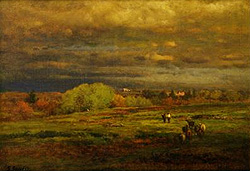
by Sandy | Dec 16, 2009 | Art, Artist, Blogroll, Museums
“Small but Sublime: Intimate Views by Durand, Bierstadt and Inness” at the Newark Museum until February 2010.
 This exhibition features mostly diminutive oil paintings by artists from the Hudson River School and the Tonalist movements.
This exhibition features mostly diminutive oil paintings by artists from the Hudson River School and the Tonalist movements.
“The Newark Museum has a superb collection of modestly sized, beautifully painted landscapes from the second half of the nineteenth century. Presented collectively these works provide a compelling overview of the different approaches to landscape painting while underscoring shifts in artistic and social attitudes towards nature.”
BTW – from Wikipedia:
Tonalism (1880 to 1915) is an artistic style that emerged in the 1880s when American artists began to paint landscape forms with an overall tone of colored atmosphere or mist. Dark, neutral hues, such as gray, brown or blue, would usually dominate such compositions. During the late 1890s American art critics began to use the term “tonal” to describe these works. Two of the leading painters associated with this style are George Inness and James McNeill Whistler.
The Hudson River School was a mid-19th century American art movement embodied by a group of landscape painters whose aesthetic vision was influenced by romanticism. Their paintings depict the Hudson River Valley and the surrounding area, including the Catskill, Adirondack, and the White Mountains.
The Newark Museum, 49 Washington Street, Newark, NJ
Image: “Delaware Valley Before the Storm”, George Inness, 1865 oil on canvas

by Bob Martin | Dec 15, 2009 | Actors, Art, Creativity, Live Performance, Movies, Theater, Writers
This quote, attributed to Tennessee Williams is said differently in the 2008 film Transsiberian (“Kill off my demons and My angels might die too”) can be said about all of us. The heroine Jessie, played by Emily Mortimer who’s beauty is hidden by the innocent gangling lumber of her walk and a face that says there should be freckles here and a cow nearby. For all its plainess, the visuals are spectacular, there is a sense of nowhere and dread in this thriller. If you have ever traveled somewhere not knowing the customs or language you will revisit your fears of that time in watching this movies. Good fun.

Cate Blanchette in Streetcar Named Desire
Keeping in touch with Tennessee Williams and quoting him through Blanche DuBois “I don’t want realism. I want magic!” Yes, yes, magic. I try to give that to people. I do misrepresent things. I don’t tell truths. I tell what ought to be truth.” Magic is where the Poetry is. The truth is never as much fun. Cate Blanchett who is starring in Liv Ullmann‘s “Streetcar Named Desire” is a magical actor and perfect fit for what I hear is a transformational point of view for this Tennessee Williams play.
[ad#Adsense Link Unit]
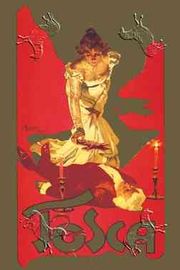
by Sandy | Dec 15, 2009 | Blogroll

“Tosca”, one of Puccini’s most popular operas is scheduled for a PBS station near you this week. (Part of the holiday special programming/fund raising, etc.)
I like Puccini – “La Boheme”, (1896) “Tosca”, (1900), “Madama Butterfly”, (1904), “Turandot”, (1924). Though not really an opera person, I find his work accessible with its universal love themes, high drama and the music is just lovely.
When I was younger, I embraced “La Boheme”: boy meets girl, they sing, girl meets boy’s friends, everybody sings, everybody is cold together, and everybody sings. Girl loses boy, boy loses girl – permanently – everybody sings. Loved it. (If you’ve seen “Rent”, the play or the movie, you‘ll know what I mean. All very moving.)
As I’ve gotten older, I have come to appreciate another popular Puccini work, “Tosca”. This opera is a real “bodice ripper”. Political intrigue, assassination, attacks on female virtue, firing squads and suicide – just too full!
Should the singer, Floria Tosca (our heroine), succumb to the unwanted advances of a powerful man (Scarpia– the evil chief of police) to save her poor artist lover (Mario Cavaradossi), who has been accused of harboring a political dissident? (This was a super serious offense in the time of Napoleon.)
Lots of costumes, passionate thrashing about, great singing and the ending is appropriately tragic.
Tosca, defends herself and then chooses to make the ultimate defiant gesture against authority. (After all, this is opera – pure drama to the very end.)
Catch “Tosca” if you can – very entertaining!
Giacomo Puccini (Dec.1858 – Nov. 1924)
(Image: Original poster for Puccini’s Tosca )

 One of the exhibits at the Dallas Museum of Art is “The Artistic Furniture of Charles Rohlfs”. “Charles Rohlfs (1853–1936) called his unprecedented designs “artistic furniture.” His unusually inventive forms and imaginative carving combined many different influences, from the abstract naturalism of art nouveau styling to boldly direct forms characteristic of the Arts and Crafts movement.”
One of the exhibits at the Dallas Museum of Art is “The Artistic Furniture of Charles Rohlfs”. “Charles Rohlfs (1853–1936) called his unprecedented designs “artistic furniture.” His unusually inventive forms and imaginative carving combined many different influences, from the abstract naturalism of art nouveau styling to boldly direct forms characteristic of the Arts and Crafts movement.”

















